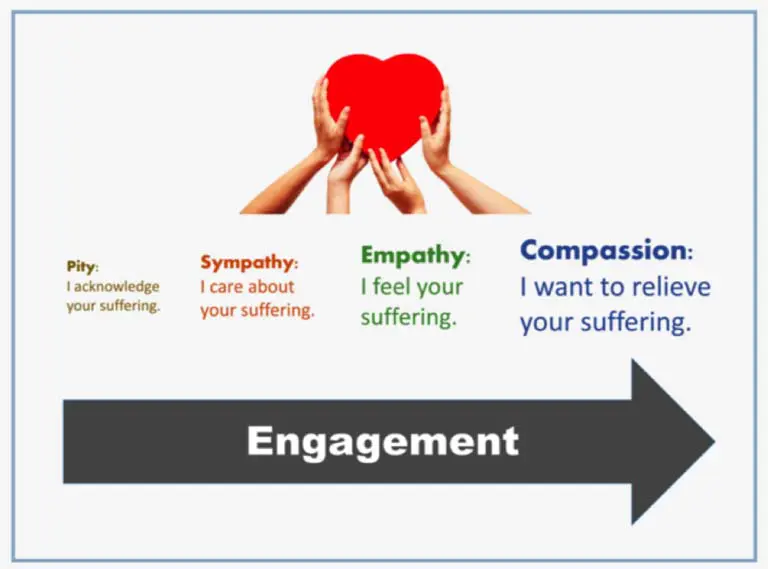RISE MODULE: PRACTICING EMPATHY
Activity: Are You Really Listening?
Download as PDFObjectives:
- Define empathy.
- Articulate the difference between sympathy and empathy.
- Recognize and practice the difference between problem solving and empathetic listening.
Duration: 30 minutes
Materials:
- Handout of engagement spectrum image from Psychology Today
- Video clip: Brené Brown on Empathy (2013) (bit.ly/brenébrownvideo)
- A method of projecting onto a screen
"One doesn't have to operate with great malice to do great harm. The absence of empathy and understanding are sufficient." — Charles M. Blow
Instructions:
To begin introduce the module topic and distribute the engagement spectrum image handout (or project on a screen). Read the phrase under each term.
Engagement Spectrum

Source: Psychology Today
Then play the Brené Brown video (bit.ly/brenébrownvideo) on empathy. Emphasize that empathy is different from sympathy and deals more with connecting with people versus simply feeling sorry for them. Also indicate that empathy involves more than just perspective taking - the process through which one is able to see a situation from the viewpoint of another.
Divide the group in half and assign one side to be the storytellers and the other side to be the listeners. Then ask participants to pair up a storyteller with a listener and spread out around the room.
- Ask the storytellers to think about a current challenge they are facing that can be described in a minute or less. This should be a challenge they are willing to share with the group. Provide them with 30 seconds to think of their challenge.
- Once participants are paired and facing each other, give the listeners instructions to listen in problem-solving mode by asking questions and making comments to help fix the situation shared by the storyteller. Give one minute for the storytellers to share the challenge with their partner, and then give two minutes for listening and asking questions. Be sure to time both the storytelling and the listening.
- Once time is up, ask the storytellers to stay in their spot and the listeners to shift to a different partner. Let participants know they now will listen in empathetic mode by asking questions and making comments to help their partner feel better and try to understand what they are experiencing. They should keep in mind the four components from the engagement spectrum. The storyteller should share the same challenge. Repeat one minute for sharing the challenge and two minutes for listening. Be sure to time both the storytelling and the listening.
- Next ask participants to rotate roles. Storytellers should become listeners and move to a different partner. Repeat round one (problem solving) and two (empathetic listening).
To debrief the exercise, take approximately 10 minutes to discuss the following questions:
Discussion Questions:
- When you were sharing a challenge, how was the experience different in each round?
- When you were listening, how was the experience different in each round?
- What was easy about transitioning to empathetic listening? What was difficult?
- What are some things to be cautious about when practicing empathy? Sometimes when practicing empathetic listening we can become caught up in our own feelings as we try to connect with the other person. The conversation can become about us and rather than the other person.
Key Takeaways:
- There is a difference between sympathy and empathy.
- Empathy is the first step in the process of truly connecting with someone.
- Empathy is sometimes more important than solving someone's problem.
Next Steps: Take the following actions after completing the activity with your team.
- Share photos on social media and tag/mention RISE.
- Facebook: @RISEtoWIN
- Instagram: @RISEtoWIN
- Twitter: @RISEtoWIN
- Snapchat: @RISEtoWIN
- Discuss your experience with students, athletes, coaches, athletic department staff and other organization members. Identify ways you and your school/organization can help lead the way in improving race relations and driving social progress.
Feedback:
RISE welcomes feedback as we seek to continually improve our tools and resources. We encourage allparticipants to share their feedback by completing an online survey at bit.ly/risetools. Our Leadership &Education Programs team can be reached at education@RISEtoWIN.org.
Our
Partners
Stay
In Touch
Follow us on social media.